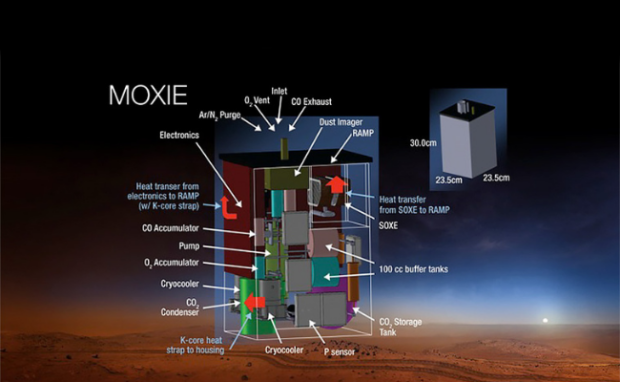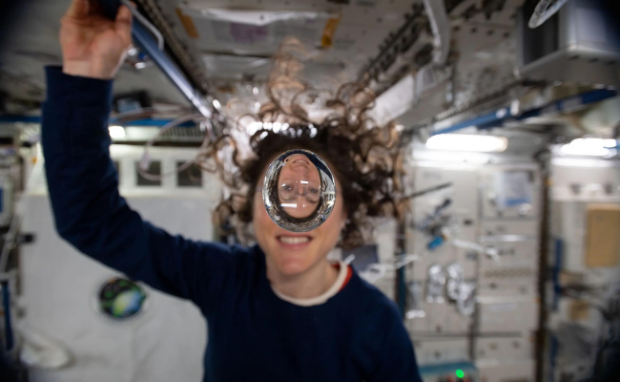NASA rover soon to make oxygen for future astronauts
NASA’s Perseverance rover improved its oxygen-producing capability, paving the way for self-sustaining space missions. The National Aeronautics and Space Administration hopes producing breathable air for astronauts will save on cost, weight, and capacity limits. As a result, space explorers may stay longer among the stars.
That NASA oxygen maker could bring us closer to building habitable lunar and Martian settlements. After all, that could help us launch more crew members into outer space to build infrastructure and economy. Moreover, we often redesign space tech for practical Earth applications. For example, divers may replace oxygen tanks with that contraption.
Let’s discuss the NASA Perseverance rover’s latest oxygen-producing upgrade. Later, I will share other space projects highlighting the possibilities this gadget unlocks.
How does the NASA oxygen maker function?

Photo Credit: skyatnightmagazine.com
Business Insider reported NASA’s oxygen project is the Mars Oxygen In-Situ Resource Utilization Experiment or MOXIE. In 2021, the space agency attached it to the Perseverance rover for testing and development.
The organization said it created 122 grams of oxygen over the last two and a half years. That’s enough to keep a dog alive for 10 hours. It may seem trivial, but NASA hailed it as an unexpected success.
MOXIE’s principal investigator, Micheal Hecht, said, “We rolled the dice a little bit. It was ‘hold your breath and see what happens.” Space.com says the machine takes carbon dioxide molecules from Mars and separates their oxygen from carbon.
The MOXIE website says it is a “solid oxide electrolyzer cell,” which functions like a fuel cell in reverse. Fuel cells turn fuel and oxygen to produce a stable chemical product and electricity.
That’s how hydrogen fuel cells for automobiles work. On the other hand, a solid oxide electrolyzer cell takes water and electricity to make oxygen and hydrogen.
You may also like: NASA chatbot will let spaceships speak to astronauts
The NASA oxygen maker uses carbon dioxide instead of water because Mars has limited sources. You would have to travel to the Red Planet’s northern regions or mine ice underground.
Inquirer Tech said MOXIE created its first oxygen batch in April 2021. However, it only produced 5 grams, equivalent to 10 minutes of breathable air for an astronaut performing normal activities.
“This is the first demonstration of actually using resources on the surface of another planetary body and transforming them chemically into something that would be useful for a human mission,” said Jeffrey Hoffman, MOXIE deputy principal investigator. “It’s historic in that sense.” NASA plans to create a larger version that could facilitate manned space missions.
What are NASA’s other projects?

Photo Credit: newatlas.com
The NASA oxygen maker is part of the space agency’s long-term objective to build space infrastructure. The space org is working with the Defense Advanced Research Projects Agency to have humans living on the Moon.
LunA-10 is a joint NASA and DARPA project. DARPA Strategic Technology Office program manager Micheal Nayak explained it with this statement:
“For 65 years, DARPA has pioneered and de-risked technologies vital to civil space advancement. LunA-10 continues this rich legacy by identifying and accelerating key technologies that may be used by government and the commercial space industry, and ultimately to catalyze economic vibrancy on the Moon.”
We would need breathable air if we were to have lunar settlements, hence NASA’s MOXIE development. Also, the space agency created a machine that turns 98% of astronaut sweat and urine into potable water.
You may also like: NASA testing laser communication system
The Red Planet’s harsh conditions endanger future crew. That is why the space agency built a humanoid robot to survey Martian environments before astronauts can go outside.
However, Valkyrie’s first mission is in the Land Down Under, overseeing mining rigs for Woodside Energy. It will verify facilities are safe for workers while the company collects data.
Then, the energy firm sends their findings to NASA to further improve the robot. Together, these projects may elevate humanity into the next Space Age!
Conclusion
NASA created a machine that turns surrounding carbon dioxide into oxygen. Soon, it could become an essential equipment for future space missions.
More importantly, we might see gadgets that use MOXIE technology in the future. For example, divers and miners might stay longer underwater and underground.
Perhaps it could serve as “mechanical trees” for dry, desert cities. After all, we rely on repurposed space tech daily, such as GPS. Check out Inquirer Tech to learn more about the latest digital tips and trends.